This viscosity experiment is a fun way to discover how different liquids flow. Or just to have a race with ketchup and other kitchen ingredients!
The rate at which different fluids flow can vary considerably, this is called resistance to flowing viscosity.
We did this on a big board in the garden, but it works just as well on a much smaller scale. Chopping boards make a really good ramp.
Viscosity Experiment for Kids
What you need
- Ramp - chopping board or paper covering something else.
- Stopwatch
- Liquids to test: we used oil, water, corn syrup, passata, treacle and ice cream sauce.
- We used old yogurt drink bottles as containers for the liquids.
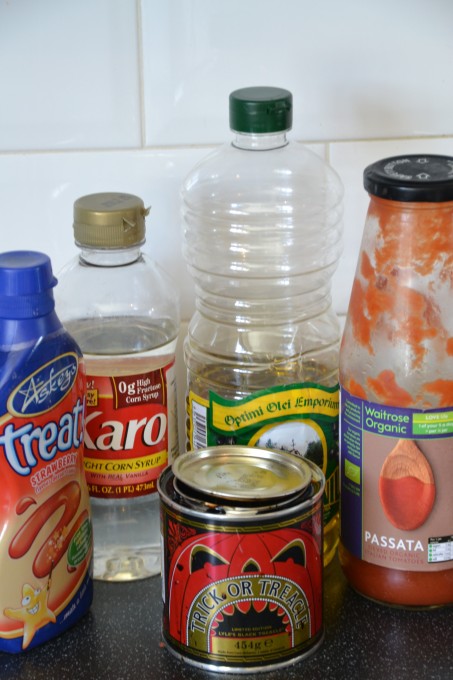
We carefully considered the best way to time the different liquids. Initially, we thought we would let them all run down the ramp at the same time and see which reached the bottom first, but we decided it would be too hard to release them all at the same time and difficult to time. So, we drew two lines on the ramp and recorded the time taken for each liquid to pass between the lines.
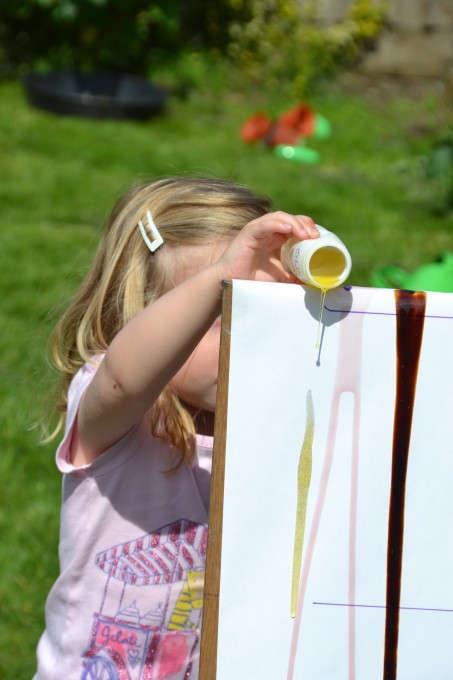
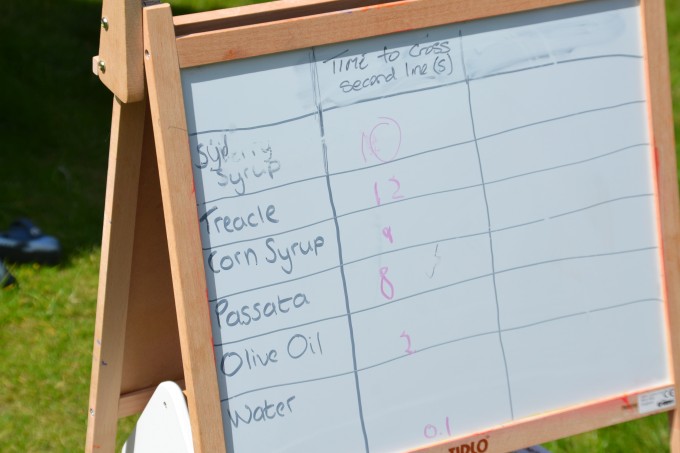
Viscosity Experiment Instructions
- Pour the liquids down the ramp one at a time.
- Start the timer as the liquid passes over the first line and stop when it passes the second.
- Repeat for all liquids.
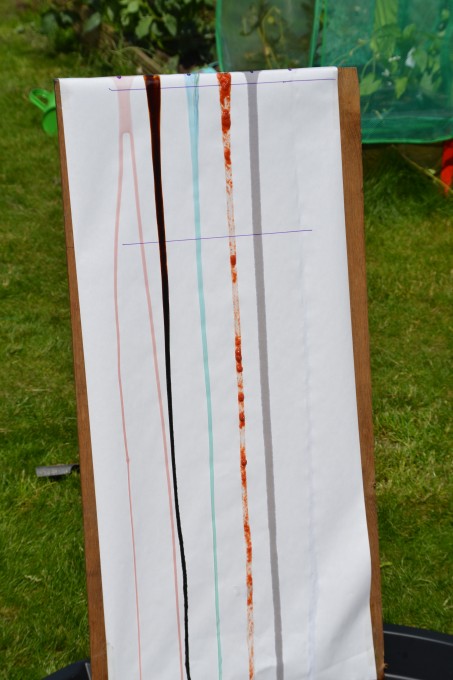
Make your own ramp
If you're doing this in a school or with lots of children, a wipe-clean ramp is a good idea. I made this one for a school science fair by covering a big sheet of cardboard with contact paper (sticky back plastic ).
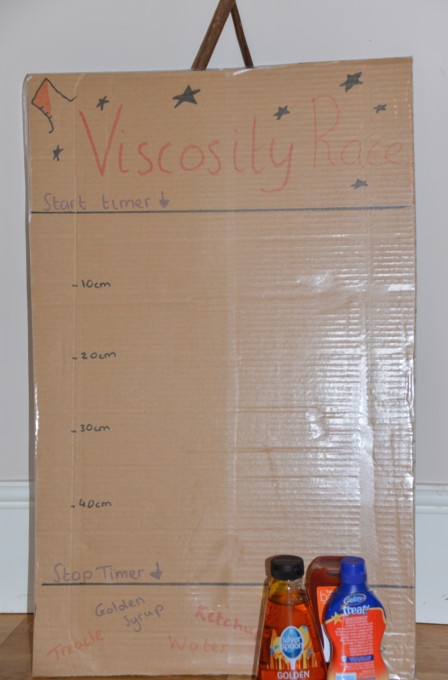
Let's make it a fair test!
The same volume of liquid should be used for each substance. We used 50ml.
Only start the timer once the liquid has passed the first line.
If the ramp falls over mid experiment, make sure it has the same gradient as before to keep the test fair.
Repeat the test 3 times for each liquid and find the average time.
More Easy Science for Kids
There's a similar activity in Snackable Science where we race different kinds of ketchup to investigate whether different brands flow at different speeds.
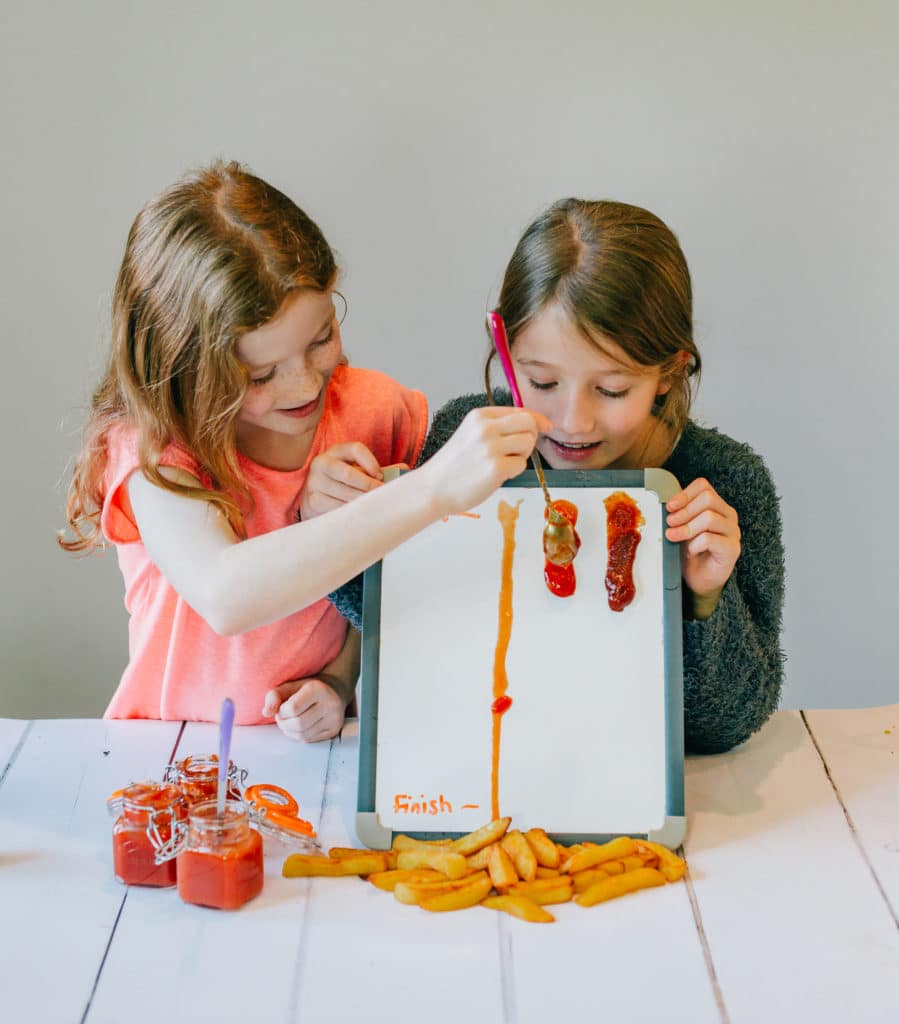
If you enjoyed this experiment, we've got lots more easy outdoor science experiments and investigations you might like and some great kitchen science experiments too!
More kitchen science experiments
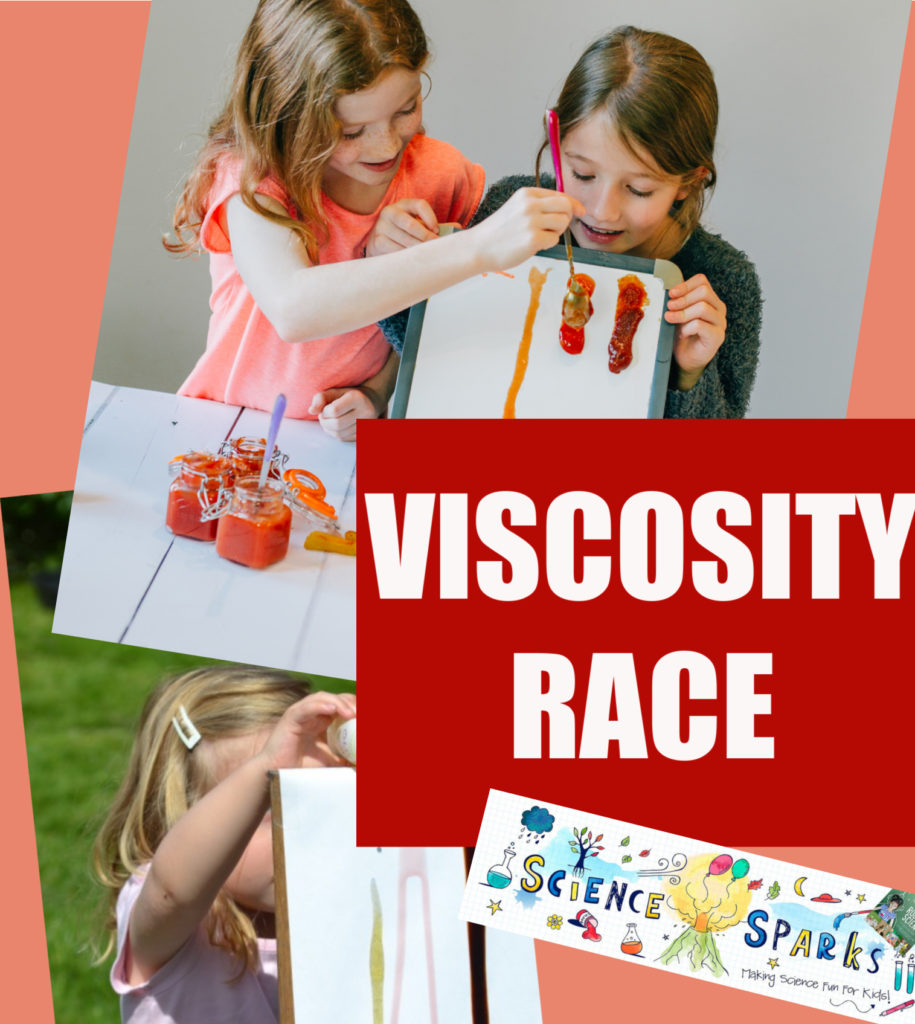
Affiliate links
Last Updated on February 21, 2025 by Emma Vanstone
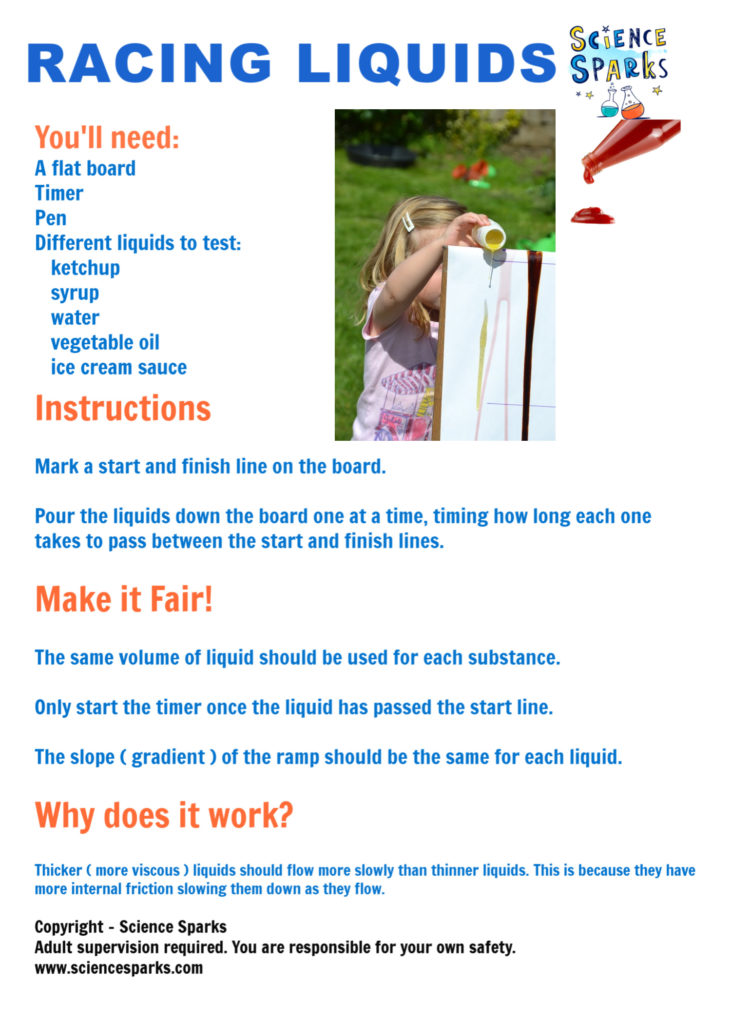
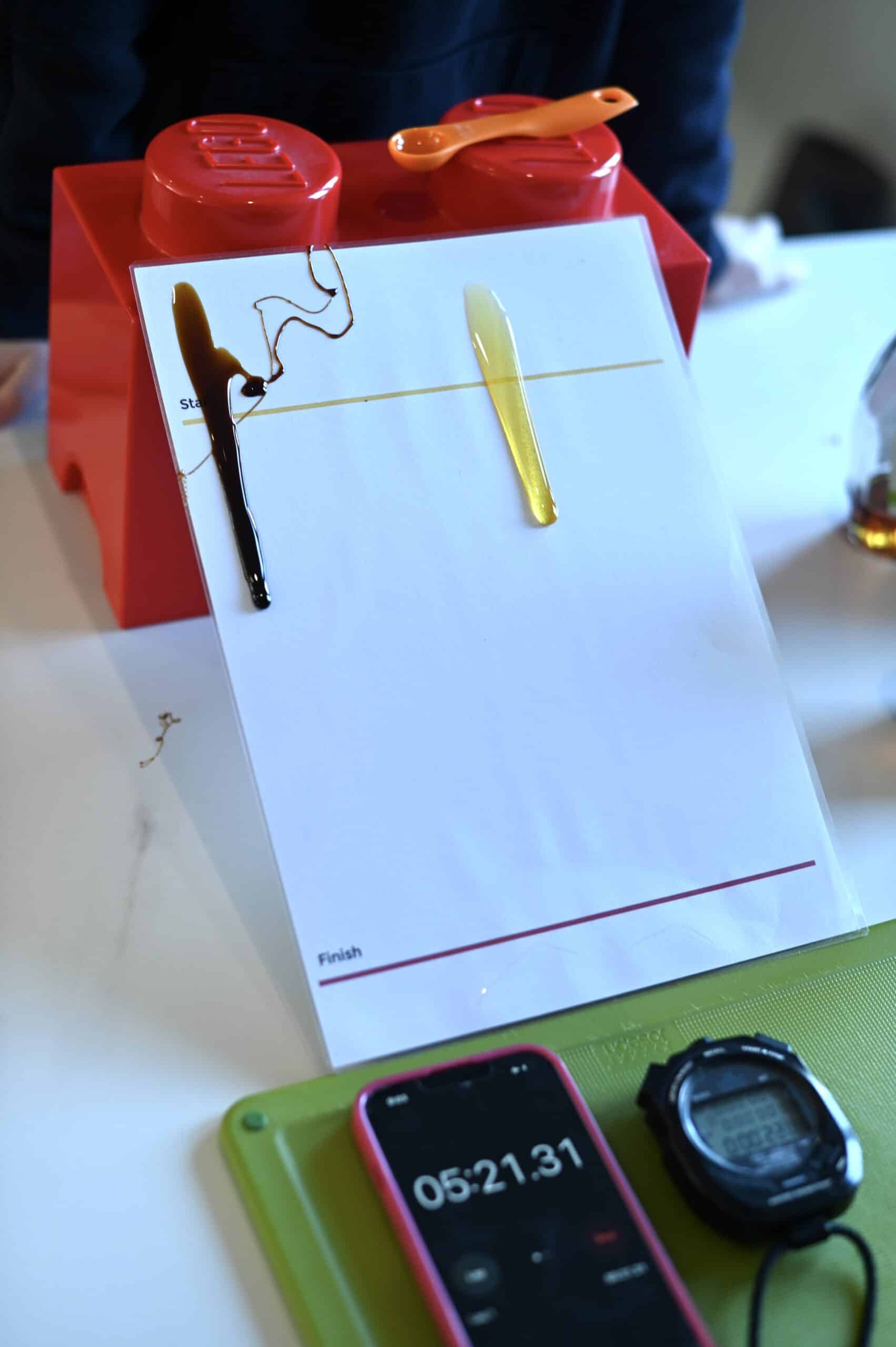
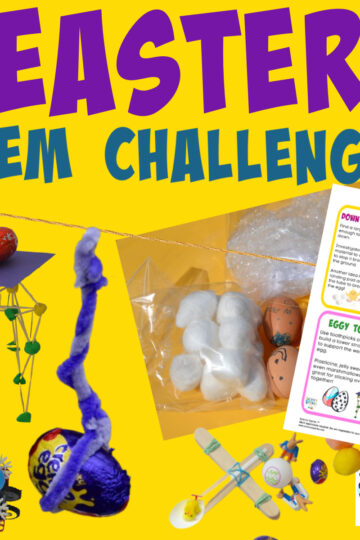
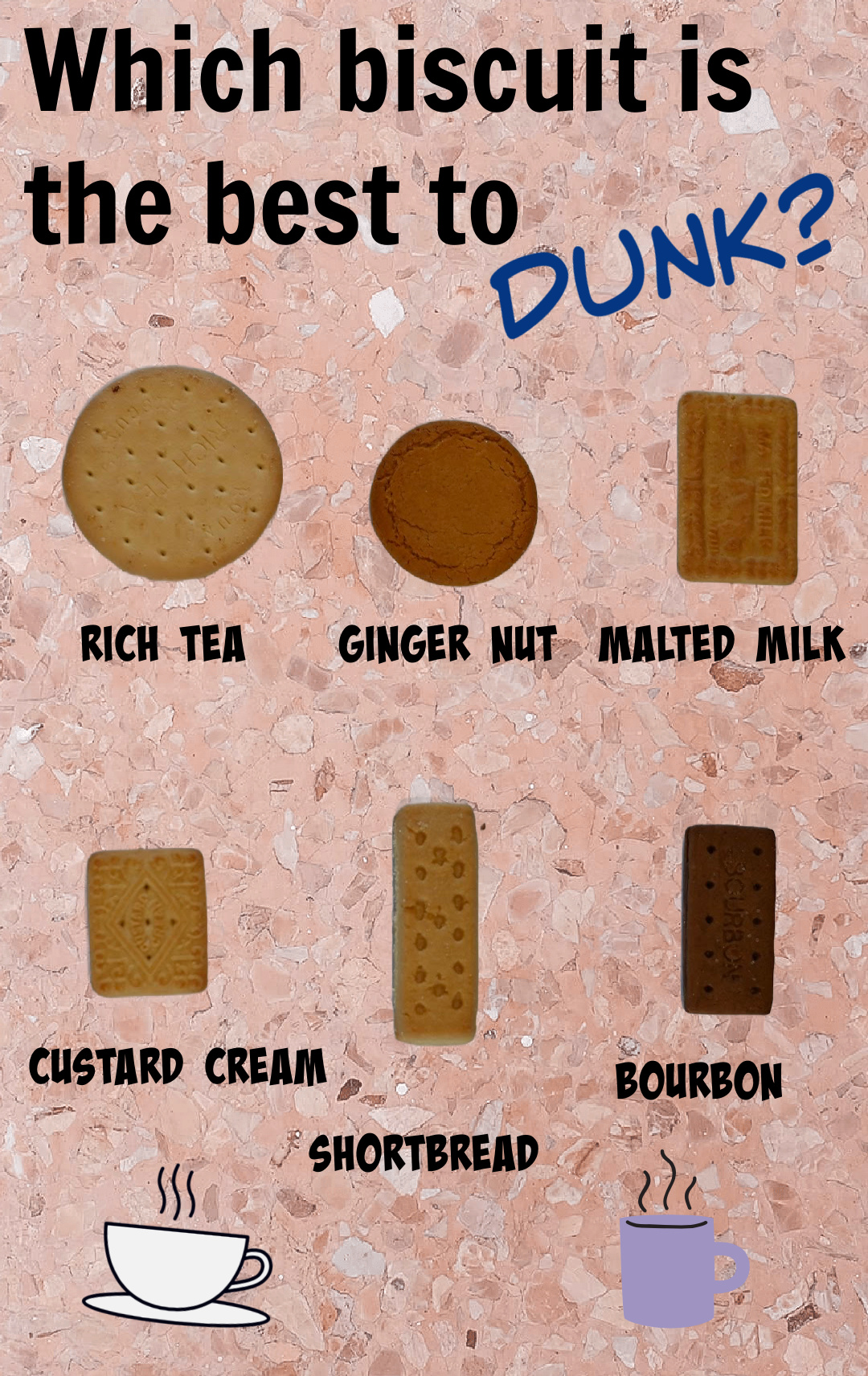
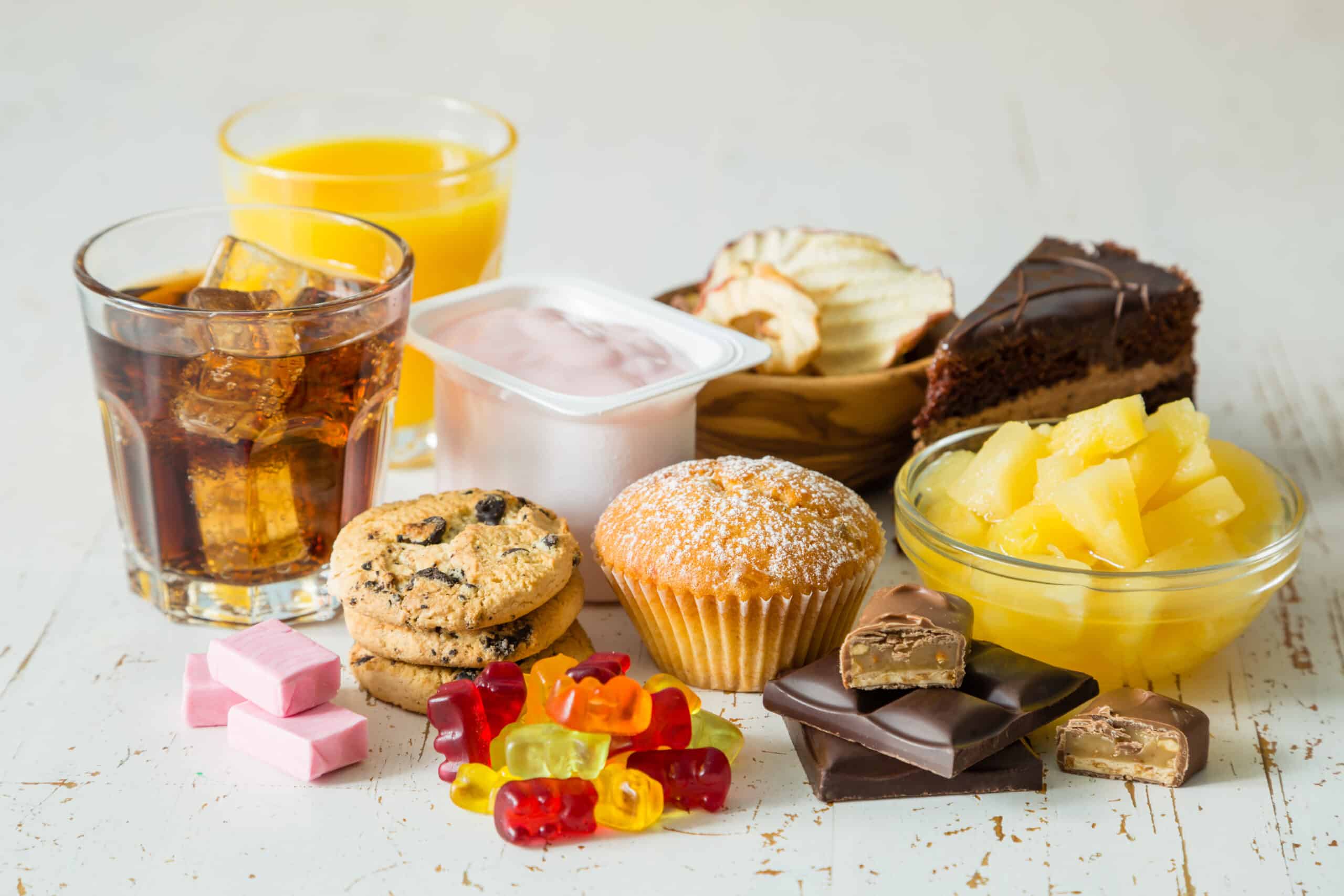
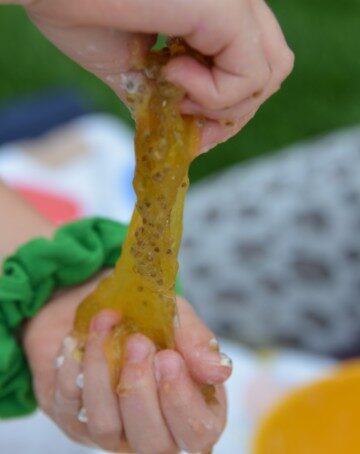
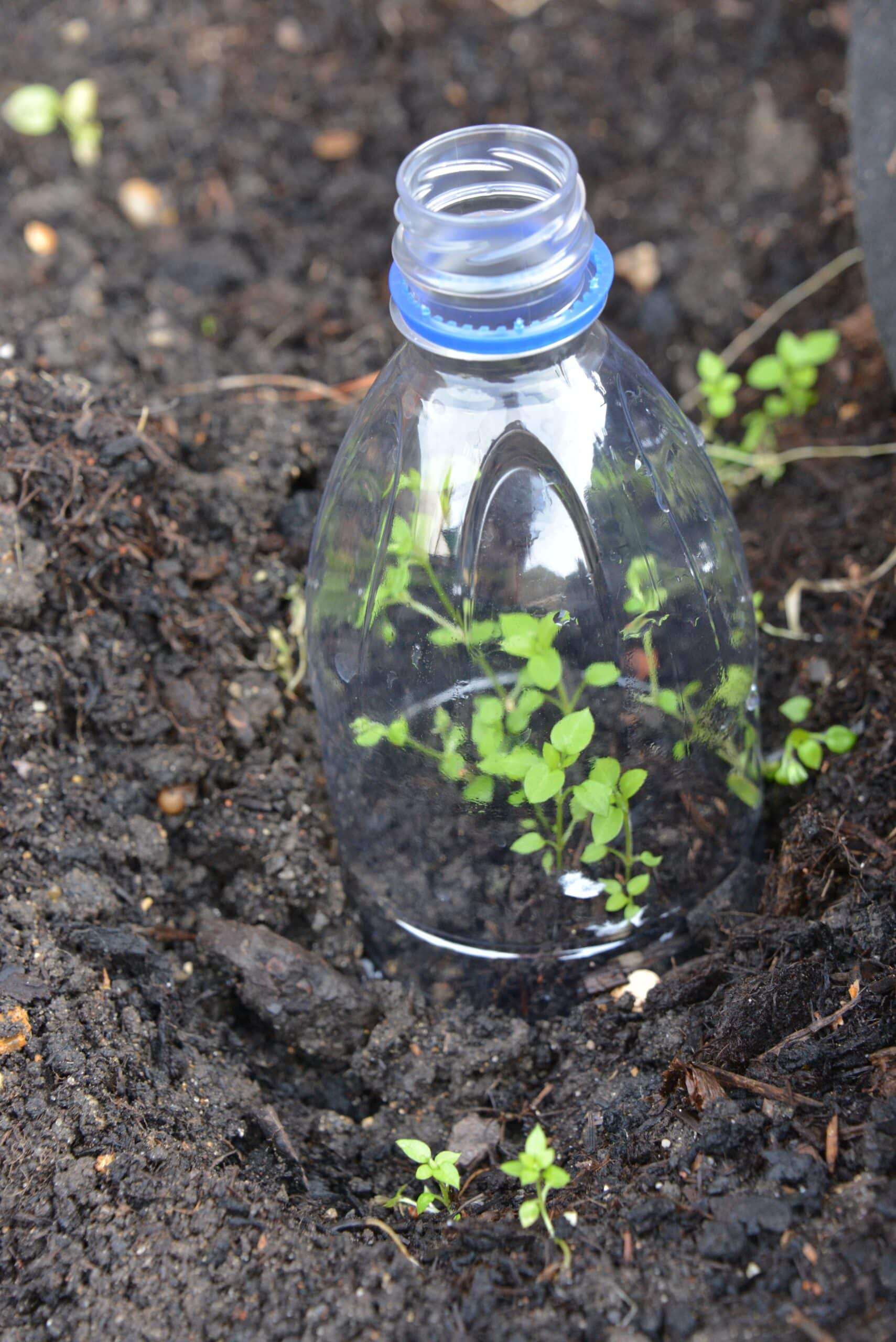


Natalie says
Visiting from Afterschool - this is a great experiment, and I like how you applied scientific method of measurement to it. I bet you also did predictions in the beginning.
becky says
What a cool idea...definitely one for summer hols!
Deceptively Educational says
My son would LOVE this ... oh, who am I kidding?!? I want to try this too!! Thanks for linking up to the After School Linky Party. I'm featuring this tomorrow. Stop by to check it out and share more of our amazing ideas/activities while you're there!
Rohit says
Cool experiment. Easy way to understand with experiment 🙂
Rohit says
Inspired by you, i posted a topic related to Viscosity 🙂 do check it on my blog. Not posting link because don't want to get in spam.
Katie says
How is this inspiring you? This is so dum
Katie says
How is this inspiring you? This is so dum. How do unto the dum message
Katie says
Thanks, it wasn't much help but, I used it any way